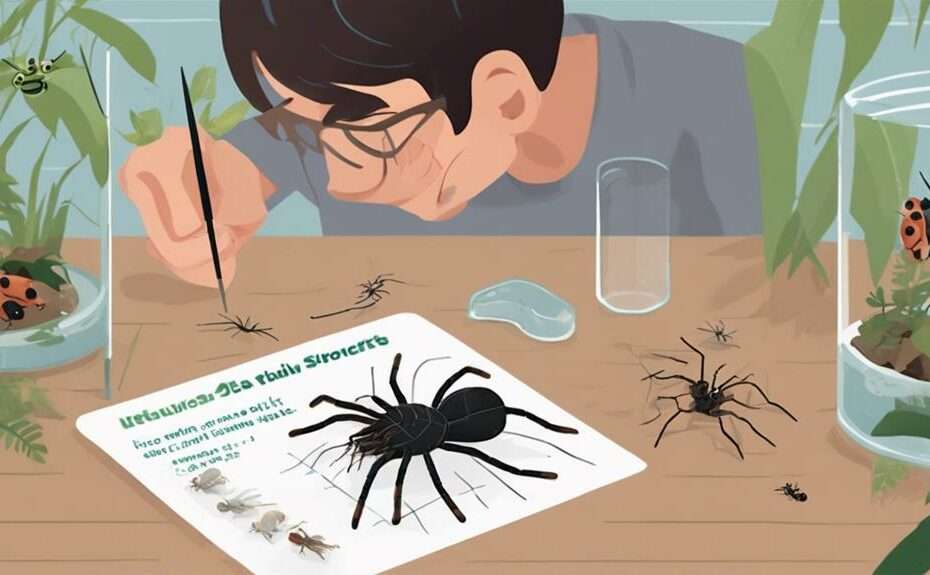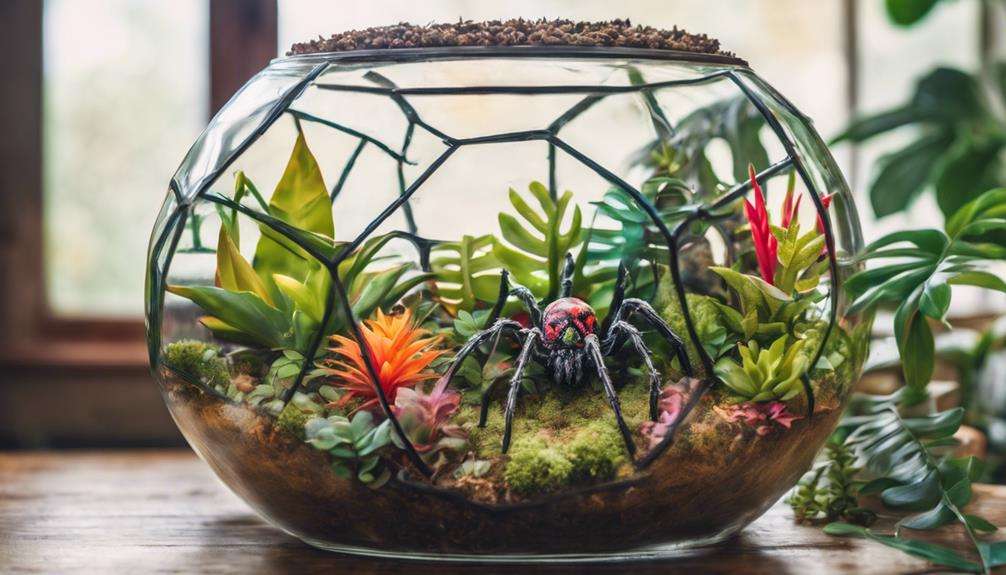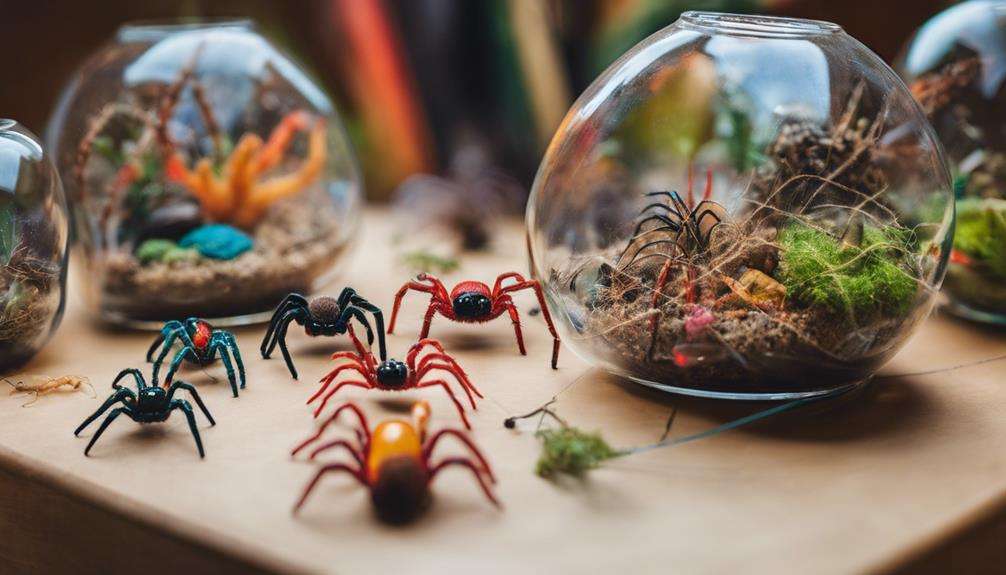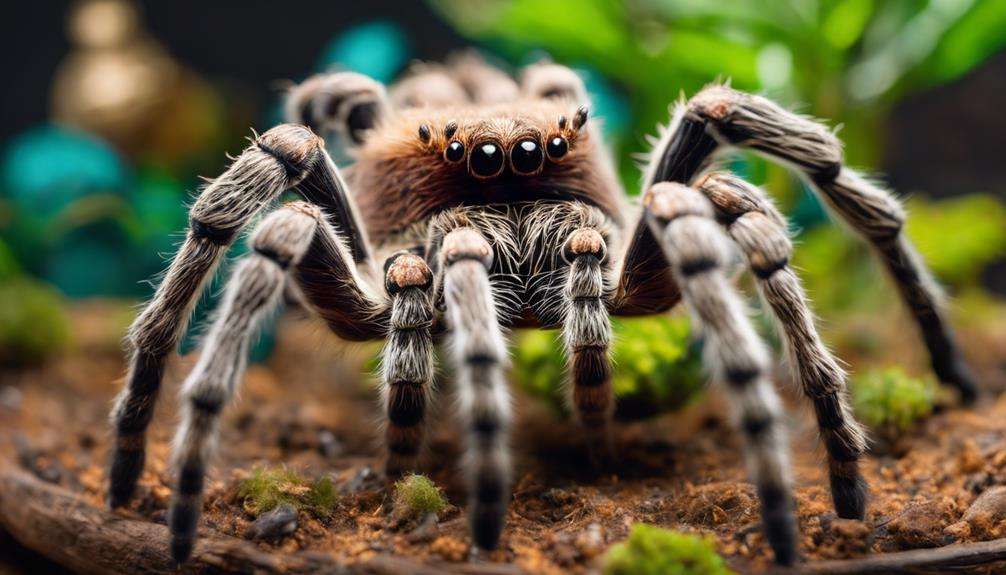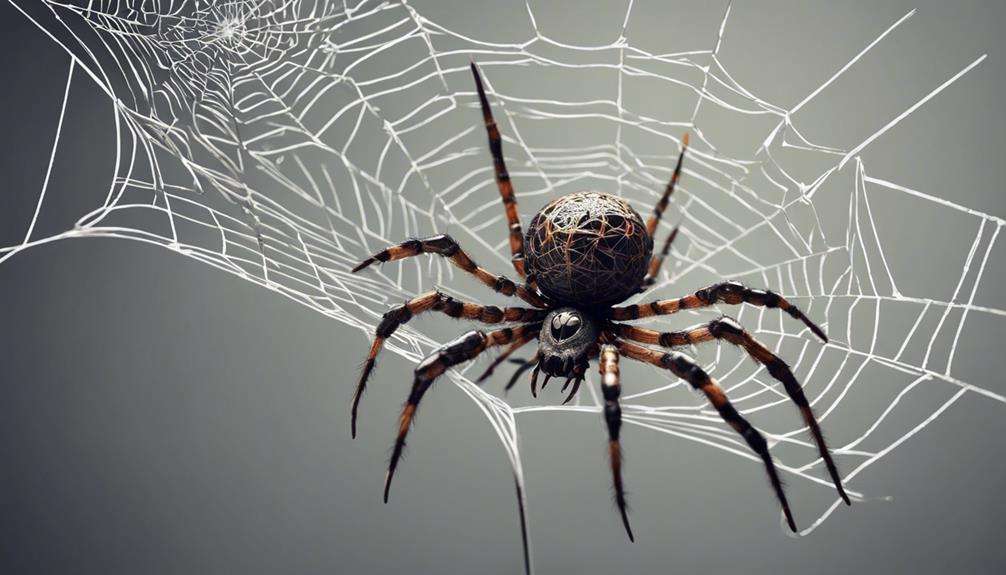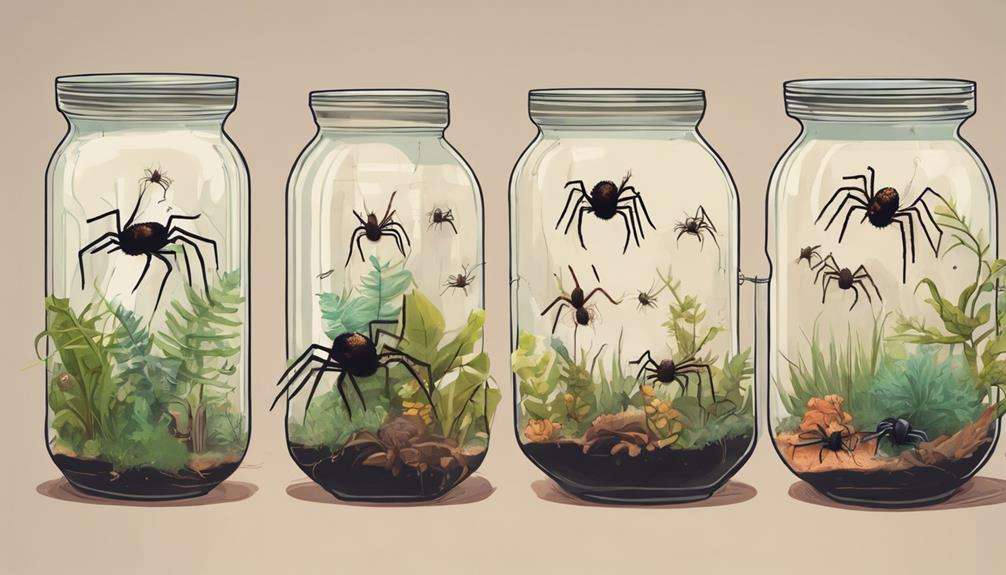Are you prepared to handle your pet spider safely and responsibly? Handling pet spiders requires a delicate balance of caution and understanding. With the right approach, you can develop a rewarding relationship with these fascinating creatures.
From safety precautions to building trust, there are essential tips to explore in exploring the world of pet spider care.
Key Takeaways
- Use gentle touch and slow movements for safe handling.
- Recognize spider body language cues to prevent aggression.
- Build trust with regular positive interactions and food offerings.
- Employ tools like catching cups for secure manipulation.
Safety Precautions for Handling Pet Spiders
Before handling your pet spider, make sure you wash your hands with warm water to prevent transferring any chemicals or scents that may disturb or harm the spider. This is important as spiders are sensitive to foreign substances.
When it comes to handling your pet spider, always prioritize safety precautions. Ensuring a clean, clear table with only the spider's enclosure present is essential to minimize distractions and create a safe environment for handling. Additionally, having a catching cup and a paintbrush ready can help guide the spider gently if necessary during the handling process.
It's crucial to be observant of the spider's body language, especially watching out for threat poses like raised front legs and chelicera display, which can indicate potential aggression. If needed, don't hesitate to enlist the help of a second person to guarantee a smooth and secure handling experience with your pet spider. Remember, these precautions are key to fostering a positive interaction with your spider friend.
Proper Handling Techniques for Pet Spiders
When handling your pet spider, use a gentle touch to coax it onto your hand for a secure interaction. Spiders can be delicate creatures, so it's important to approach them with care.
Watch for positive signs like leg waving or touching to gauge the spider's readiness before attempting to handle it. Moving slowly and keeping the spider over a table can prevent accidental falls during handling, ensuring both your safety and the spider's.
Patience is key, as some spiders may take time to acclimate to handling interactions. Additionally, avoid handling your spider during pre-moult or post-moult weakness to prevent unnecessary stress on the spider's fragile body.
Creating a Safe Handling Environment
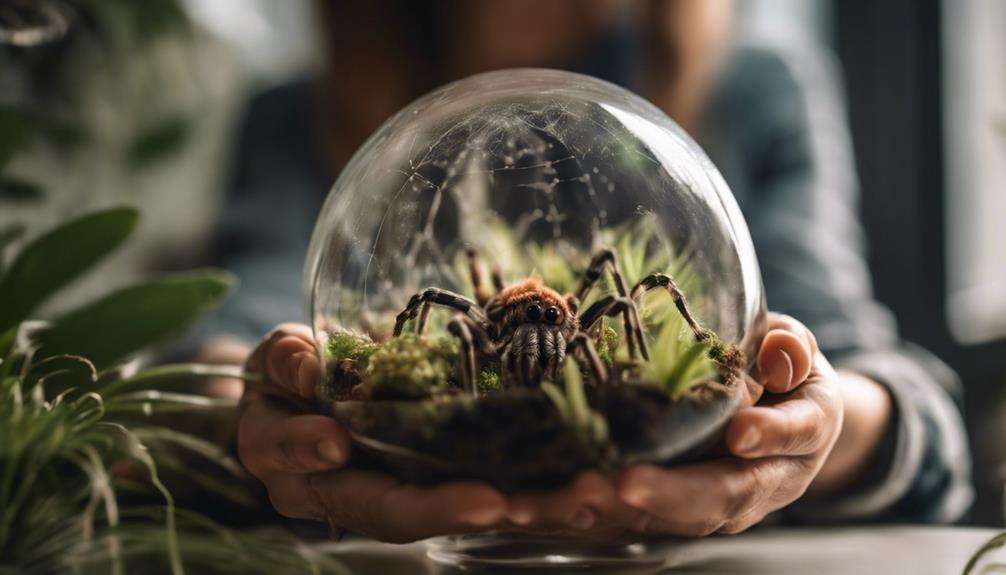
To guarantee the safety and well-being of your pet spider during handling sessions, it's imperative to establish a secure and hazard-free environment. Start by making sure the handling area is clear of distractions and potential hazards to prevent accidents. Utilize an appropriate enclosure that's escape-proof to contain your spider during handling.
When interacting with your spider, remember to use a gentle touch and slow movements to minimize stress. Have a catching cup and a paintbrush readily available to guide the spider if necessary. Avoid sudden movements or loud noises that can startle your spider, as this may lead to defensive reactions.
It's also advisable to have a second person nearby for assistance in case the spider behaves unpredictably. By creating a calm and controlled environment, you can help make sure a safe and positive handling experience for both you and your pet spider.
Understanding Spider Behavior for Safe Handling
Understanding spider behavior is essential for ensuring safe handling practices with your pet spider. Spiders communicate through body language cues, such as leg waving or raising their front legs, which can serve as warning signs of potential aggression. By recognizing these behavioral signals, you can prevent accidents during handling interactions.
It's important to approach handling with patience, as some spiders may require time to acclimate to human contact. When guiding a spider, using tools like catching cups, paintbrushes, or cards can help guarantee safe manipulation without causing stress to the spider.
Additionally, observing positive signs like a spider touching or approaching you can indicate that the spider is comfortable and ready for handling. By being attentive to spider behavior cues and practicing safe handling techniques, you can build a trusting relationship with your pet spider while minimizing risks of mishaps.
Building Trust With Your Pet Spider
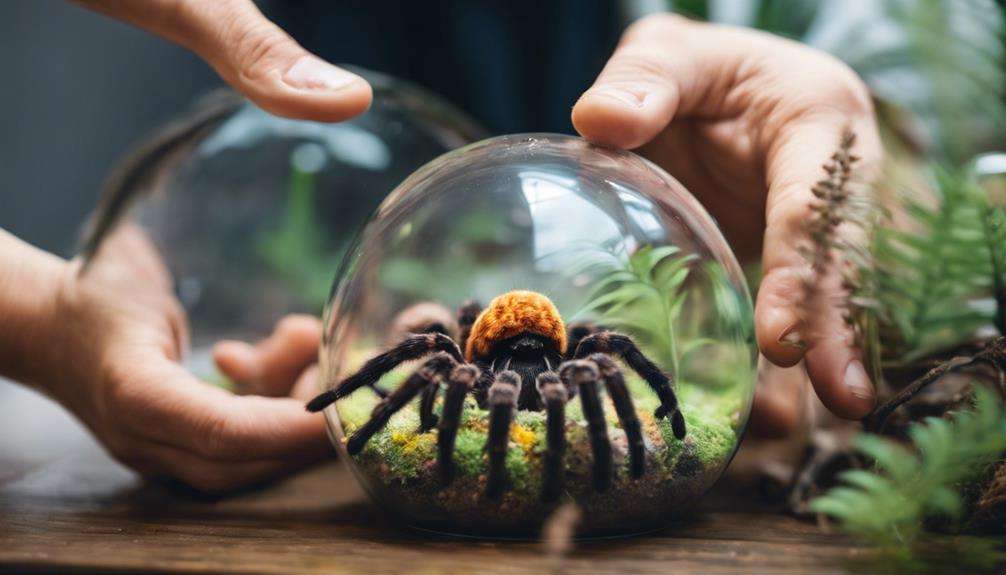
Familiarizing yourself with your pet spider's surroundings and spending time near its enclosure can help establish trust and familiarity. Handling tarantulas requires patience and a gentle approach. Avoid sudden movements or loud noises, as these can stress your pet spider and hinder the trust-building process.
Consistent interactions, such as offering food regularly, can help associate your presence with positive experiences. When approaching the spider, do so slowly and gently to prevent startling it. Remember that tarantulas are low-maintenance pets but still require care and attention to build a bond. Be patient and understanding, as trust takes time to develop.
Frequently Asked Questions
How Do You Handle a Pet Spider?
When handling a pet spider, make sure it's settled and healthy. Use a gentle touch to coax it onto your hand, watching for signs of comfort. Be patient and safe, recognizing threat poses and having tools ready.
How Do You Take Care of a Pet Spider?
To care for your pet spider, establish a feeding schedule with gut-loaded insects, create a suitable habitat with proper ventilation, hiding spots, and maintained humidity levels. Use gentle handling techniques to guarantee your spider's well-being and health.
Do Pet Spiders Like to Be Held?
Pet spiders, like most creatures, don't seek being held for affection. Their wild nature doesn't align with bonding like traditional pets. Handling techniques must consider spider behavior to avoid stress and risks. Interaction benefits humans more.
How Do You Handle Spiders?
Skillfully handle spiders with care. Wash hands, use a gentle tool for guidance, and create a calm space. Recognize defensive signals and move slowly for a positive encounter. Prioritize safety and respect for your pet spider.
Conclusion
To sum up, handling pet spiders requires careful attention to safety and proper techniques.
Did you know that the average lifespan of a pet spider can range from 1 to 25 years, depending on the species?
By following safety precautions, understanding spider behavior, and creating a safe handling environment, you can build a trusting relationship with your eight-legged friend while minimizing risks.
Remember, respect for their wild nature is key in ensuring a positive and enriching experience with your pet spider.
